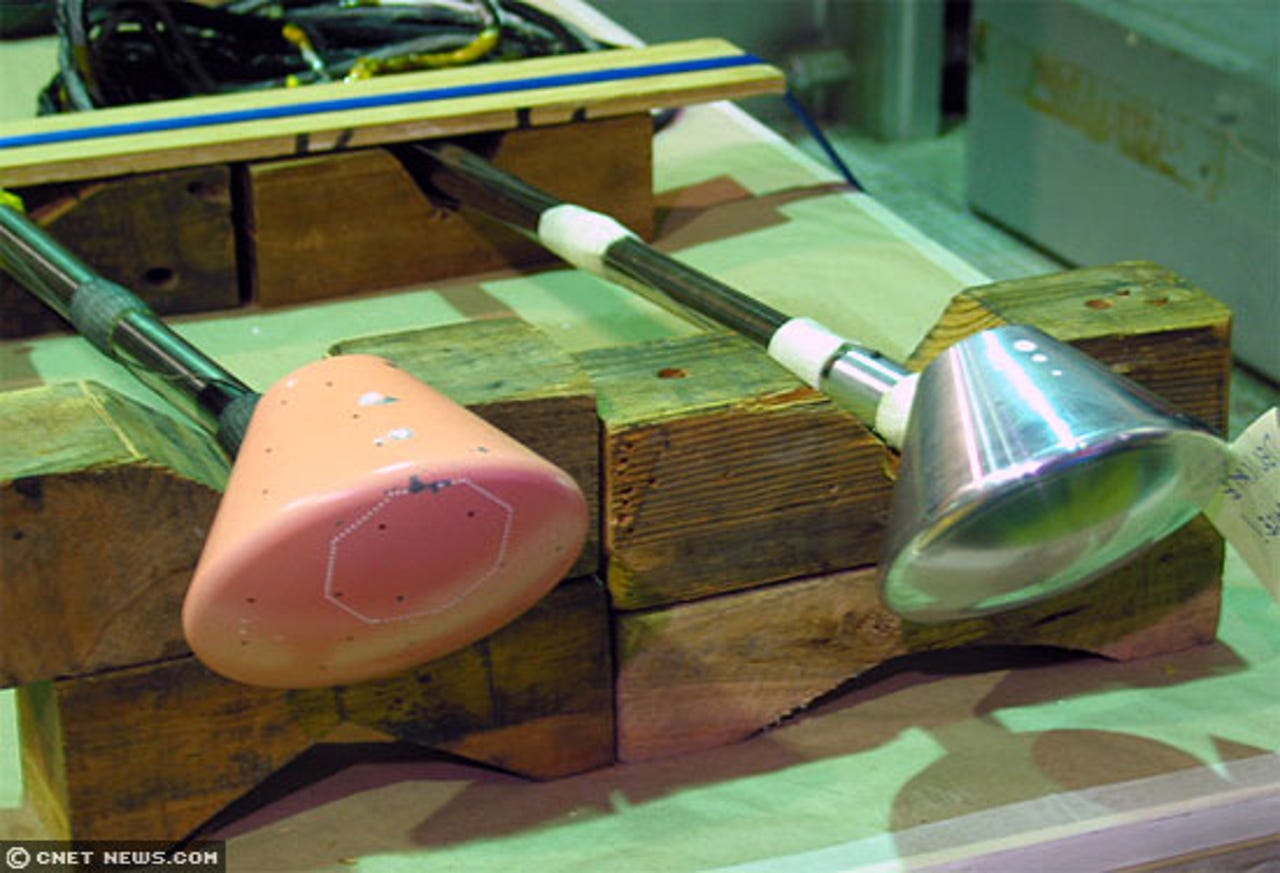Photos: Space capsules under pressure


Up close with both CEVs
One CEV model is covered with pink, pressure-sensitive paint. It gives constant readings of pressure when inside the wind tunnel. The other measures forces being applied to the model inside the tunnel.
The research facility was shown off to a group of visitors on March 7, 2006.
7 percent model Nickison
Nickison explains the way the 7 percent scale model of the crew exploration vehicle is used for measuring pressure and various environmental forces in the wind tunnel.
7 percent model UV
A 7 percent scale model of the CEV shown in NASA Ames' 11-foot by 11-foot transsonic wind tunnel in the ultraviolet light used to measure pressure on the model.
CEV model with chipped paint
A 2.77 percent scale model of a CEV with pressure-sensitive paint has some of the paint chipped off due to intense testing in a wind tunnel.
Shuttle model--front
A front view of a model of the space shuttle inside NASA Ames' 9-foot by 7-foot supersonic wind tunnel.
Shuttle model--side
A side view of a model of the space shuttle inside NASA Ames' 9-foot by 7-foot supersonic wind tunnel, which can produce wind up to Mach 2.6.
Wind tunnel model
A model of NASA Ames' Unitary Plan Wind Tunnels, which were completed in 1956 for $26 million.
Nickison with CEV model
Donald Nickison, chief of the wind tunnel division at the NASA Ames Research Center, talks about the CEV models.
Sarver with CEV models
George Sarver, project manager for the CEV support project, demonstrates the effects of the wind tunnel on the CEV.